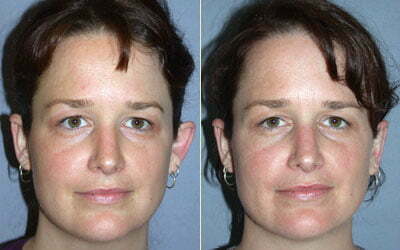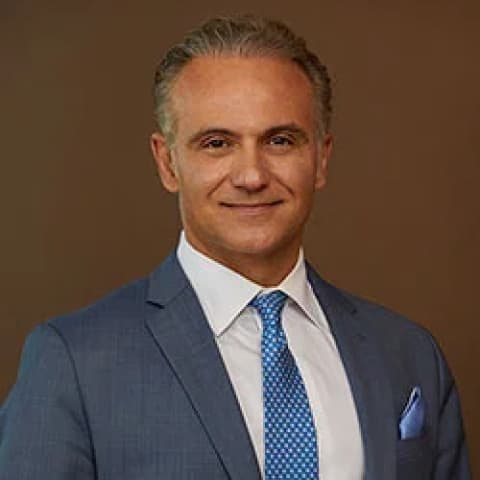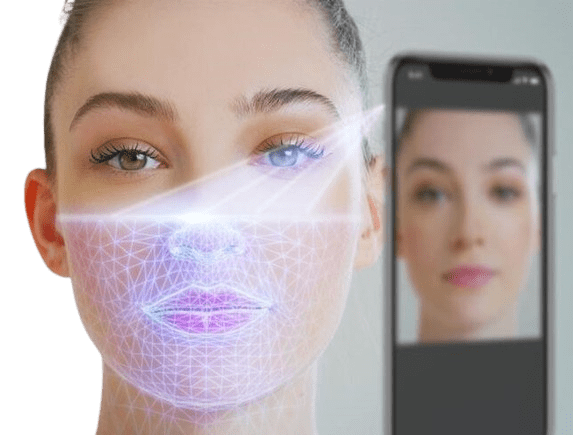There’s no need to feel self-conscious about your ears
Prominent ears can attract unwanted attention that can harm a person’s self-image. Ear surgery (otoplasty) performed by Eugene plastic surgeon Dr. Movassaghi is usually performed to pin prominent ears closer to the head or to reduce the size of large ears.

What is otoplasty?
For adults in Eugene, otoplasty (ear pinning) plastic surgery can address life-long concerns about their appearance. Plastic surgeon Dr. Movassaghi may reshape or reduce the size of the ears to help them appear symmetrical and streamlined with the contours of the face, helping to improve how you feel about your appearance.
Dr. Kiya Movassaghi is a highly respected board-certified plastic surgeon with more than 20 years of experience in the field. His extensive surgical expertise, combined with an exceptional aesthetic eye, ensures that patients receive stunning, natural-looking results.
Who can benefit from ear pinning surgery?
Otoplasty (ear pinning) plastic surgery is often performed on children after the age of 4 when the ears reach full size. Otoplasty for a child can help him or her avoid a lifetime of ridicule and self-doubt resulting from unusually-shaped ears.
What are the risks of ear surgery?
The specific risks and the suitability of the ear pinning procedure for a given individual can be determined only at the time of consultation. All surgical procedures have some degree of risk. Minor complications that do not affect the outcome occur occasionally. Major complications are unusual.
Preparing for an otoplasty procedure
Dr. Movassaghi will provide you with specific pre-operative instructions, which may include avoiding certain medications, stopping smoking, and arranging for someone to take you home after the procedure. Following these guidelines to a T will help ensure a smooth recovery following your surgery.
Eugene ear pinning surgery with Dr. Kiya Movassaghi
Dr. Movassaghi performs surgery at McKenzie Surgery Center or Sacred Heart Medical Center in Eugene, Oregon. First, the patient is typically placed under local anesthesia with sedation or general anesthesia, depending on the patient’s age and the extent of the surgery. Dr. Movassaghi then makes small incisions behind the ear, where they are naturally hidden in the crease. Through these incisions, he then reshapes or removes cartilage to achieve the desired contour and position, using sutures to “pin back” the ears closer to the head. In some cases, permanent internal stitches may be used to secure the new shape. The procedure usually takes about 1-2 hours, and once complete, the incisions are closed, and the ears are bandaged to support healing.
“Thank you so very much for all your support, expertise and encouragement. In just this short amount of time, you have given me the reassurance to know that I am in great hands.”
Frequently Asked Questions about Ear Pinning Surgery
Don’t allow yourself or a loved one to struggle with oversized or unusually-shaped ears. Board-certified Eugene plastic surgeon, Dr. Kiya Movassaghi, specializes in surgeries that both enhance the appearance and function of certain areas of the body. Dr. Movassaghi has over 20 years of experience performing ear surgery in Eugene, Oregon. Schedule your consultation online or call us at (541) 686-8700.
References »
Papadopulos NA, Niehaus R, Keller E, Henrich G, Papadopoulos ON, Staudenmaier R, Kovacs L, Peter Herschbach, Pototschnig H, Machens HG. The Psychologic and Psychosocial Impact of Otoplasty on Children and Adults. Journal of Cranio-Maxillofacial Surgery. 2015 Nov;26(8):2309-14. doi: 10.1097/SCS.0000000000001990.
Handler EB, Song T, Shih C. Complications of otoplasty. Facial Plastic Surgery Clinics of North America. 2013 Nov;21(4):653-62. doi: 10.1016/j.fsc.2013.08.001.
Siegert R, Magritz R. Otoplasty and Auricular Reconstruction. Facial Plastic Surgery & Aesthetic Medicine. 2019 Aug;35(4):377-386. doi: 10.1055/s-0039-1693745.
Hoshal SG, Morisada MV, Tollefson TT. Reducing Surgical Risks for Otoplasty. Facial Plastic Surgery Clinics of North America. 2023 May;31(2):253-261. doi: 10.1016/j.fsc.2023.01.011.
Ordon A, Wolfswinkel E, Shauly O, Gould DJ. Aesthetic Otoplasty: Principles, Techniques and an Integrated Approach to Patient-Centric Outcomes. Aesthetic Plastic Surgery. 2019 Oct;43(5):1214-1225. doi: 10.1007/s00266-019-01441-2.
Stewart KJ, Lancerotto L. Surgical Otoplasty: An Evidence-Based Approach to Prominent Ears Correction. Facial Plastic Surgery Clinics of North America. 2018 Feb;26(1):9-18. doi: 10.1016/j.fsc.2017.09.002.
Naumann A. Otoplasty – techniques, characteristics and risks. GMS Curr Top Otorhinolaryngol Head Neck Surg. 2007;6:Doc04.




